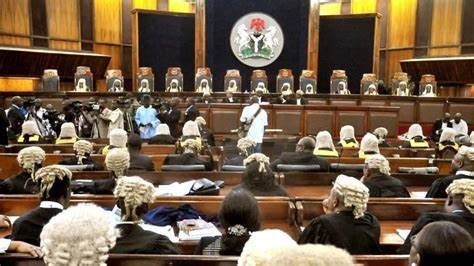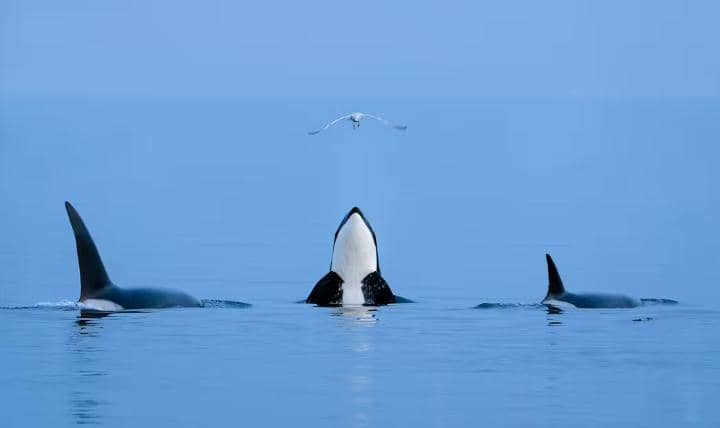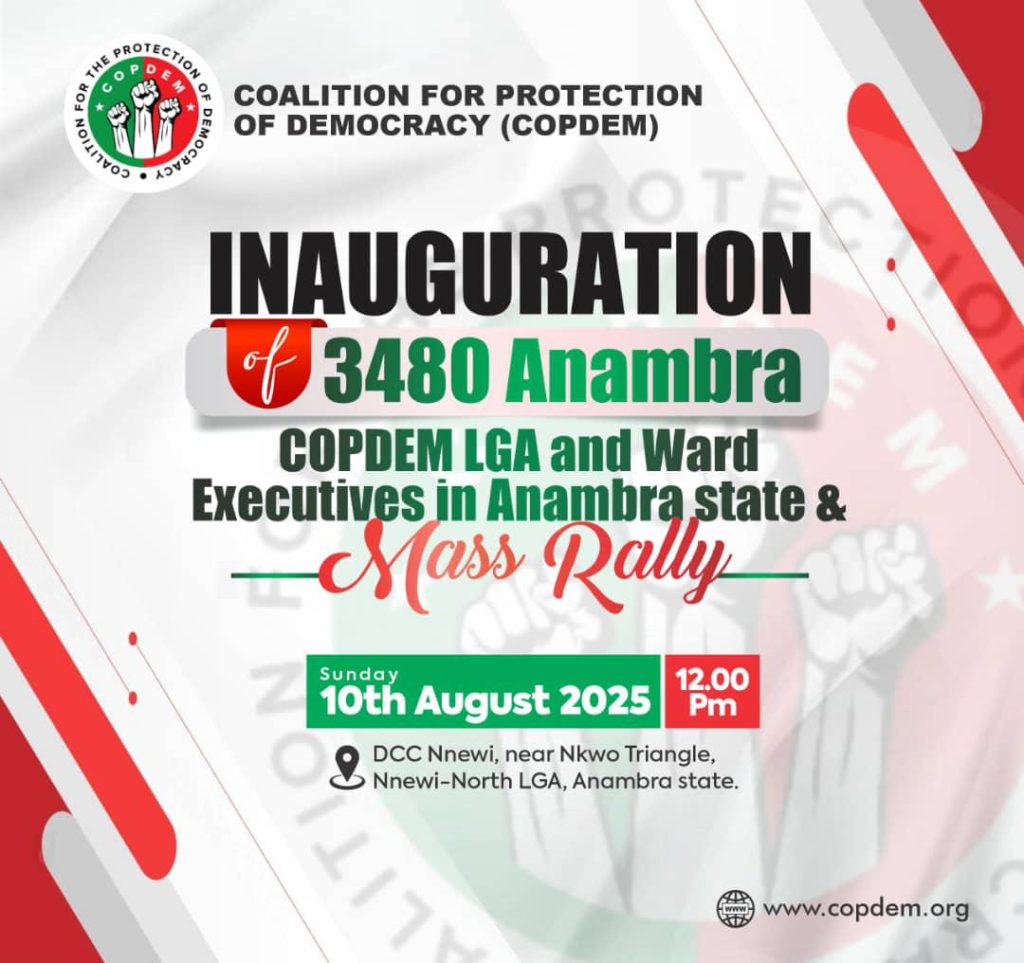News
Life and times of Pope Francis (Dec 17, 1936 – Apr. 21, 2025)
as Roman Pontiff passes on at 88

On Monday, April 21, 2025, the atmosphere around the Catholic Church grew cold with the announcement of the passing on of Pope Francis.
Francis is the first Pope of non-european descent, Pope Francis, who was born Jose Mario Bergoglio on December 17, 1936, to Italian migrants.
The Pope was born in Buenos Aires, Argentina.
He became the 266th Pope of the Catholic Church on the 13th of March 2013. Pope Francis is notable for his focus on inclusiveness in the Church.
His father Mario was an accountant employed by the railways and his mother Regina Sivori was a committed wife dedicated to raising their five children.
He graduated as a chemical technician and then chose the path of the priesthood, entering the Diocesan Seminary of Villa Devoto.
When he was about 21 years old, he suffered a severe bout of pneumonia that led to the removal of part of his right lung.
On 11 March 1958 he entered the novitiate of the Society of Jesus.
He completed his studies of the humanities in Chile and returned to Argentina in 1963 to graduate with a degree in philosophy from the Colegio de San José in San Miguel.
From 1964 to 1965 he taught literature and psychology at Immaculate Conception College in Santa Fé and in 1966 he taught the same subject at the Colegio del Salvatore in Buenos Aires.
From 1967-70 he studied theology and obtained a degree from the Colegio of San José.
On 13 December 1969 he was ordained a priest by Archbishop Ramón José Castellano.
He continued his training between 1970 and 1971 at the University of Alcalá de Henares, Spain.
On April 22, 1973 made his final profession with the Jesuits.
On 31 July 1973 he was appointed Provincial of the Jesuits in Argentina, an office he held for six years.
Bergoglio’s tenure as head of the country’s Jesuits coincided with the military coup in Argentina (1976) led by Lieut. Gen. Jorge Rafael Videla.
During the ensuing Dirty War (1976–83), a campaign by the country’s military dictatorship against leftists and other perceived subversives.
Reports say that between 10,000 and 30,000 people “disappeared” (kidnapped, tortured, and usually killed) by the military and the police.
Bergoglio later claimed to have hidden several people from the authorities, even helping some of them to flee the country.
In 1976 two Jesuit priests who had worked in poor neighborhoods were disappeared; they were found alive, but drugged, in a field five months later.
Years after the Dirty War, Bergoglio’s role in the priests’ kidnapping and release generated controversy.
Some critics faulted Bergoglio for failing to protect the priests and even accused him of turning the men over to the regime.
Others accepted Bergoglio’s claim that he covertly interceded with the regime to secure their eventual release.
A lawsuit against Bergoglio charging him with complicity in the priests’ disappearance was ultimately dismissed.
He then resumed his work in the university sector and from 1980 to 1986 served once again as Rector of the Colegio de San José, as well as parish priest, again in San Miguel.
In March 1986 he went to Germany to finish his doctoral thesis; his superiors then sent him to the Colegio del Salvador in Buenos Aires and next to the Jesuit Church in the city of Córdoba as spiritual director and confessor.
It was Cardinal Antonio Quarracino, Archbishop of Buenos Aires, who wanted him as a close collaborator.
So, on May 20, 1992 Pope John Paul II appointed him titular Bishop of Auca and Auxiliary of Buenos Aires.
On May 27, 1992, he received episcopal ordination from the Cardinal in the cathedral.
He chose as his episcopal motto, miserando atque eligendo, and on his coat of arms inserted the ihs, the symbol of the Society of Jesus.
He gave his first interview as a bishop to a parish newsletter, Estrellita de Belém.
He was immediately appointed Episcopal Vicar of the Flores district.
On December 21, 1993 was also entrusted with the office of Vicar General of the Archdiocese.
Thus it came as no surprise when, on 3 June 1997, he was raised to the dignity of Coadjutor Archbishop of Buenos Aires.
Less than nine months had passed when, upon the death of Cardinal Quarracino, he succeeded him on February 28, 1998.
He succeded him as Archbishop, Primate of Argentina and Ordinary for Eastern-rite faithful in Argentina who have no Ordinary of their own rite.
Three years later at the Consistory of 21 February 2001, John Paul ii created him Cardinal, assigning him the title of San Roberto Bellarmino.
He asked the faithful not to come to Rome to celebrate his creation as Cardinal.
Instead, he requested they donate to the poor what they would have spent on the journey.
As Grand Chancellor of the Catholic University of Argentina, he is the author of the books:
Meditaciones para religiosos (1982),
Reflexiones sobre la vida apostólica (1992) and Reflexiones de esperanza (1992).
In October 2001 he was appointed General Relator to the 10th Ordinary General Assembly of the Synod of Bishops on the Episcopal Ministry.
All the while Cardinal Bergoglio was becoming ever more popular in Latin America.
Despite this, he never relaxed his sober approach or his strict lifestyle, which some have defined as almost “ascetic”.
In this spirit of poverty, he declined to be appointed as President of the Argentine Bishops’ Conference in 2002.
However, three years later he was elected and then, in 2008, reconfirmed for a further three-year mandate.
Meanwhile in April 2005 he took part in the Conclave in which Pope Benedict XVI was elected.
Francis had a few main goals:
- open and brotherly communities, an informed laity playing a lead role,
- evangelization efforts addressed to every inhabitant of the city, and,
- assistance to the poor and the sick.
He aimed to reevangelize Buenos Aires, “taking into account those who live there, its structure and its history”.
He asked priests and lay people to work together.
In September 2009 he launched the solidarity campaign for the bicentenary of the Independence of the country.
Two hundred charitable agencies are to be set up by 2016.
And on a continental scale, he expected much from the impact of the message of the Aparecida Conference in 2007.
It got to the point that he described it as the “Evangelii Nuntiandi of Latin America”.
Bergoglio acquired a public reputation for humility, living in a simple downtown apartment rather than in the archbishop’s residence.
He also travelled by public transportation or by foot rather than in a chauffeured limousine.
He became an outspoken advocate for the poor and an able politician, deftly promoting the church’s position on social matters in meetings with government officials.
HIS OFFICE AS POPE
In February 2013 Pope Benedict XVI resigned, citing old age and health concerns.
A conclave was convened in early March, spurring hopes that Benedict’s replacement could be elected and installed before the impending Easter holiday.
Bergoglio was elected on the fifth ballot and chose the name Francis, in honor of St. Francis of Assisi (1181/82–1226).
The Saint was renowned for living a life of humble service to the poor.
He also chose to recall St. Francis Xavier (1506–52), a founding member of the Jesuits.
He declined to use the Roman numeral I to indicate that he was the first to use his papal name.
Even though he was the first Pope Francis and was widely referred to as “Francis I,”
(Traditionally, the numeral I is not added to a pope’s name until after a second pope of the same name has been elected.
John Paul I [1978] was the first pope to use the numeral during his reign.)
FRANCIS’ SOLIDARITY WITH MIGRANTS
Pope Francis showed great solidarity with migrants during his visit in July 2013 to the Italian island of Lampedusa.
This is a key destination for thousands of migrants traveling from Africa and the Middle East to Europe.
While visiting the island, he called for an end to indifference to the plight of such migrants.
Francis took charge of a church at a crossroads.
In the early 21st century Roman Catholics constituted more than one-sixth of the world’s population, many of them in Latin America and Africa.
Yet scandals, particularly the clergy sexual abuse scandals that first arose in the 1980s and ’90s, undermined the church’s stature, particularly in the United States and Europe.
In his earliest public addresses and in his first public mass, Francis called for spiritual renewal within the church.
He also called for greater attention to the plight of the poor.
PRONOUNCEMENTS ON SEXUAL ETHICS AND CLERGY SEXUAL ABUSE
In June 2013 Francis issued the first encyclical of his papacy, Lumen fidei (“The Light of Faith”).
An encyclical is a formal letter or document issued by the Pope of the Catholic Church, typically addressing matters of doctrine, morals, or church governance.
Encyclicals are considered authoritative teachings and are often used to provide guidance to Catholics worldwide on various issues.
They can cover a wide range of topics, including social justice, ethics, theology, and pastoral care.
Encyclicals are usually written in a formal and solemn tone.
Their contents are considered important for shaping the Church’s stance on specific issues.
Francis soon became noted for making statements that conveyed an openness to different perspectives on Catholic doctrine.
Notable were his statements regarding social issues and sexual ethics.
Such statements were subsequently either toned down by the Vatican or seemingly contradicted by Francis himself.
Francis issued a few other encyclicals.
Notable among them were:
- Evangelii Gaudium (The Church as a “field hospital”)
- Laudato Si (“Praise be to you”)
- Fratelli Tutti (“Brothers All”)
- Dilexit nos (He loved us)
In October 2019 Francis convened a special three-week assembly of the Synod of Bishops on the Pan-Amazon region.
The objectives of the synod were to identify new paths of evangelization, especially for Indigenous peoples living in the Amazon region.
THE CHALLENGES OF COVID-19
The COVID-19 pandemic presented challenges to Francis’s ministry in 2020, especially.
This was because Italy suffered a particularly high death rate in the first months of the pandemic, while lockdowns resulted in the closing of churches and others places of worship for in-person services.
Francis live streamed the Angelus prayer—which he typically delivered every Sunday to worshippers gathered in the square of St. Peter’s Basilica—from inside the Vatican Palace.
In March 2020, however, he left the Vatican and made a pilgrimage on foot through the streets of Rome to the Basilica of Santa Maria Maggiore.
HEALTH ISSUES, RETURN TO GLOBAL TRAVELS
In 2021 Francis largely returned to his usual calendar of activities, though he was limited by continuing pandemic-related restrictions as well as personal health issues.
A bout of sciatica led to the pope’s cancellation of several appearances in January.
However, by March he was feeling well enough to travel to Iraq, marking the first time in history that a pope visited that country.
In July he underwent surgery on his colon.
The following year Francis’s knee problems resulted in more cancellations or postponements of trips and appearances, and he began requiring the use of a wheelchair.
Yet, in July 2022 he made a “penitential pilgrimage” to Canada.
JUBILEE YEAR, HOPE, AND HOSPITALIZATION
At the beginning of 2025 Francis received the Presidential Medal of Freedom with Distinction from U.S. Pres. Joe Biden.
He also released his autobiography, Hope.
It was published to coincide with the Jubilee Year and came out amid a number of historic developments in the church.
In January Francis appointed Sister Simona Brambilla, an Italian nun, as prefect of the Dicastery for Institutes of Consecrated Life and Societies of Apostolic Life.
This marked the first time in history that a woman was selected to lead a department of the Roman Curia.
In February the pope was hospitalized for several weeks for bronchitis that developed into pneumonia in both lungs.
He was discharged in late March and subsequently made several public appearances, including from the loggia of St. Peter’s Basilica on Easter Sunday, despite doctors’ recommendations for two months of rest.
He died on April 21, the day after Easter.
For Diaspora Digital Media Updates click on Whatsapp, or Telegram. For eyewitness accounts/ reports/ articles, write to: citizenreports@diasporadigitalmedia.com. Follow us on X (Fomerly Twitter) or Facebook












